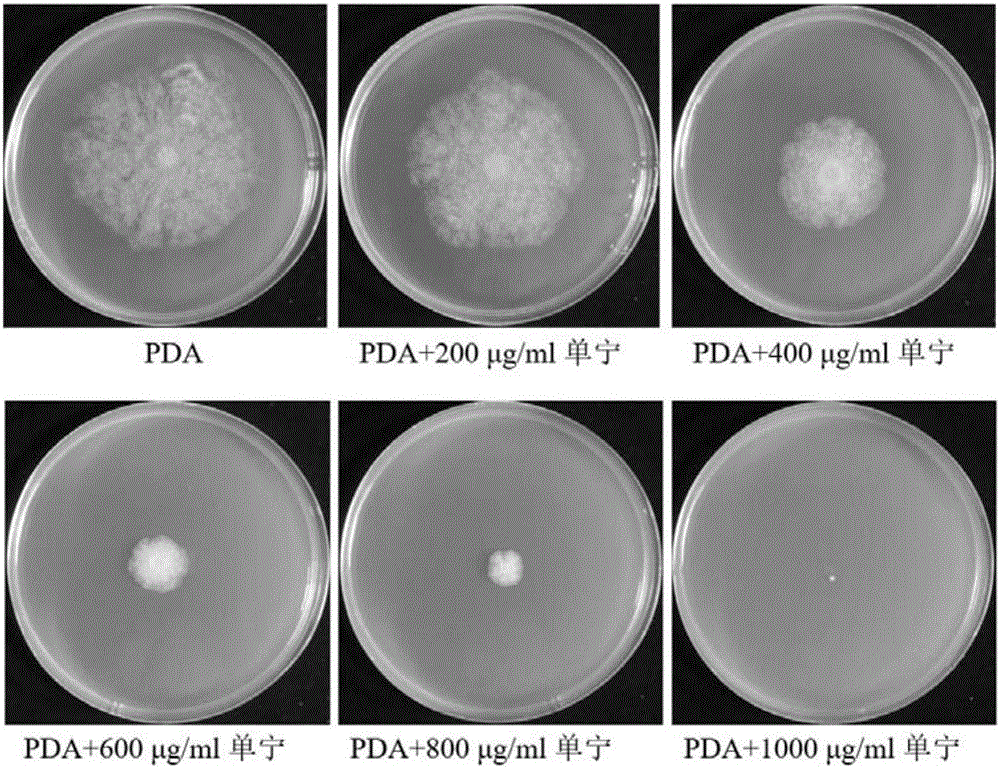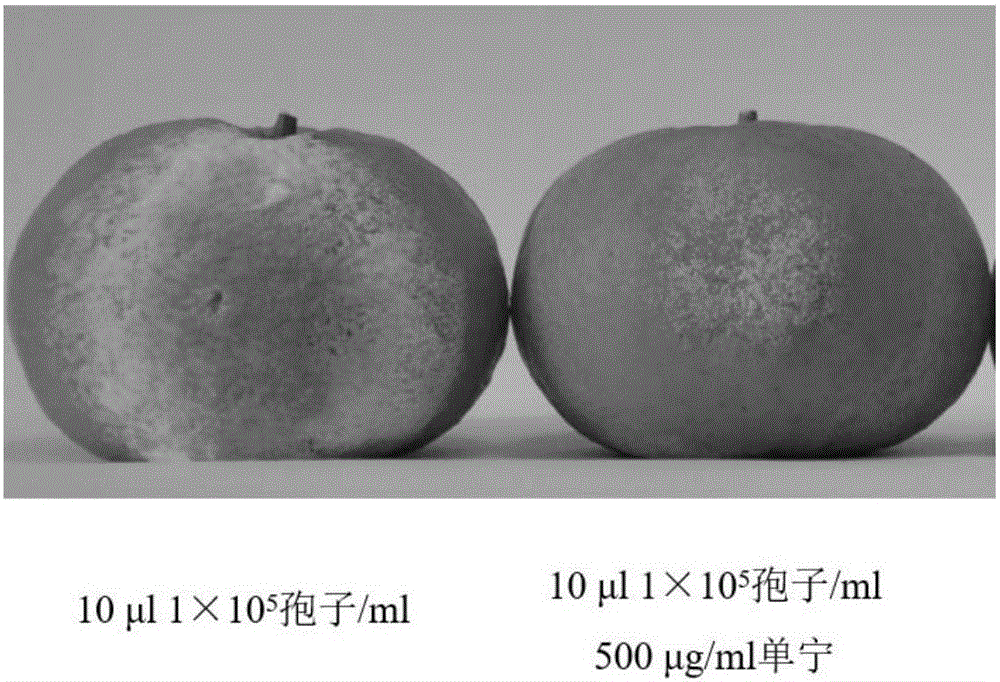Application of plant polyphenols in preparing pesticide for preventing Penicillium digitatum after harvesting of citrus
A technology for green mildew and citrus, which is applied to the application field of plant polyphenols in the preparation of medicines for preventing and controlling postharvest green mildew on citrus, can solve the problems of environmental and human health hazards, the problem of bacterial resistance, the decline of control effects, and the like. The effect of prolonging the storage period, easy operation and reducing the occurrence of green mold
- Summary
- Abstract
- Description
- Claims
- Application Information
AI Technical Summary
Problems solved by technology
Method used
Image
Examples
Embodiment 1
[0025] 1. Experimental materials and methods
[0026] Experimental Materials:
[0027] Penicillium digitatum strain Penicillium digitatum was inoculated on the slant of potato dextrose agar medium (PDA, 200g potato, 20g glucose, 20g agar, 1L water), cultured at 25°C for 7 days, and stored at 4°C for later use.
[0028] Tannin was purchased from Tianjin Fuchen Chemical Reagent Factory.
[0029] experimental method:
[0030] 1. Colony growth inhibition test
[0031] The spore suspension of Penicillium digitatum (5 μl 1×10 6 spores / ml) were inoculated on PDA plates containing 200, 400, 600, 800 and 1000 μg / ml tannins, added an equal amount of sterile water as a control, and incubated at 25°C for 7 days. Colony diameter was determined by the cross method. Three replicates were set up for each experiment. Inhibition rate (%)=(water control colony diameter-tannin treated colony diameter) / water control colony diameter×100%.
[0032] Penicillium digitatum spore suspension (5 μl...
Embodiment 2
[0055] Choose Shatangju fruits that are free from injuries and pests. No pesticides were sprayed one month before harvesting. Soak it in 500μg / ml tannin aqueous solution for 2 minutes, put it in a cool and ventilated place to dry naturally, put it into a plastic box, and store it at room temperature. The incidence was counted after 7 days of storage. Each treatment was replicated three times, and each replicate processed 100 fruits. The 500 μg / ml aqueous tannin solution is obtained by placing 500 μg of tannin in 1 ml of water and mixing uniformly to obtain a 500 μg / ml aqueous tannin solution. The results of the storage experiment showed that the incidence rate of citrus green mold treated with clear water was 7.6%. The inhibitory rate of 500μg / ml tannin aqueous solution to citrus green mold was 70.3%, and the incidence rate of citrus green mold treated by it was only 2.3%.
Embodiment 3
[0057] Select citrus fruits whose maturity reaches commercial requirements, soak them in 200 μg / ml tannin aqueous solution for 3 minutes, place them in a cool and ventilated place to dry naturally, pack the single fruits in bags, and store them. The incidence was counted after 7 days of storage. Each treatment was replicated three times, and each replicate processed 100 fruits. The 200 μg / ml aqueous tannin solution is obtained by placing 200 μg of tannin in 1 ml of water and mixing uniformly to obtain a 200 μg / ml aqueous tannin solution. The results of storage experiments showed that. The inhibitory rate of 200μg / ml tannin to citrus green mold was better, and the incidence of citrus green mold was lower.
PUM
 Login to View More
Login to View More Abstract
Description
Claims
Application Information
 Login to View More
Login to View More - R&D
- Intellectual Property
- Life Sciences
- Materials
- Tech Scout
- Unparalleled Data Quality
- Higher Quality Content
- 60% Fewer Hallucinations
Browse by: Latest US Patents, China's latest patents, Technical Efficacy Thesaurus, Application Domain, Technology Topic, Popular Technical Reports.
© 2025 PatSnap. All rights reserved.Legal|Privacy policy|Modern Slavery Act Transparency Statement|Sitemap|About US| Contact US: help@patsnap.com



